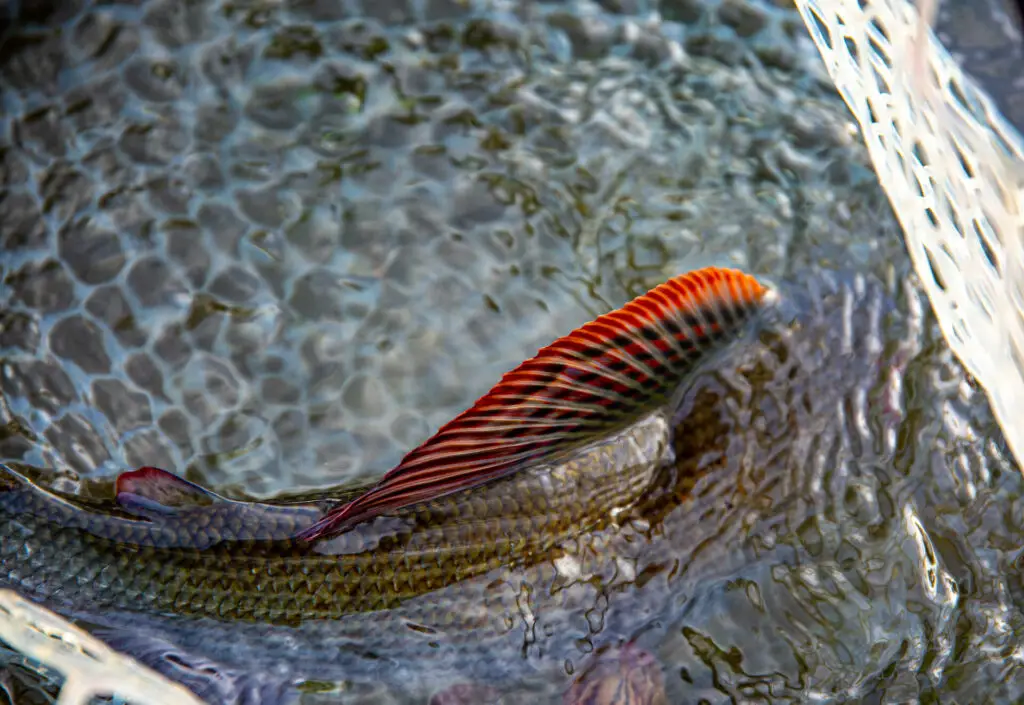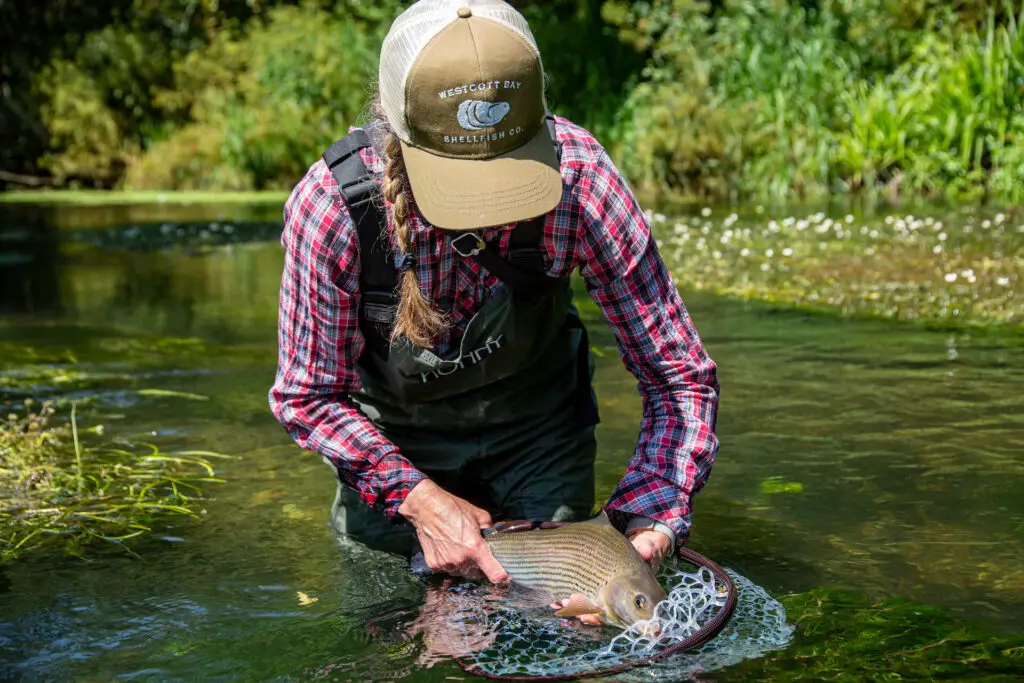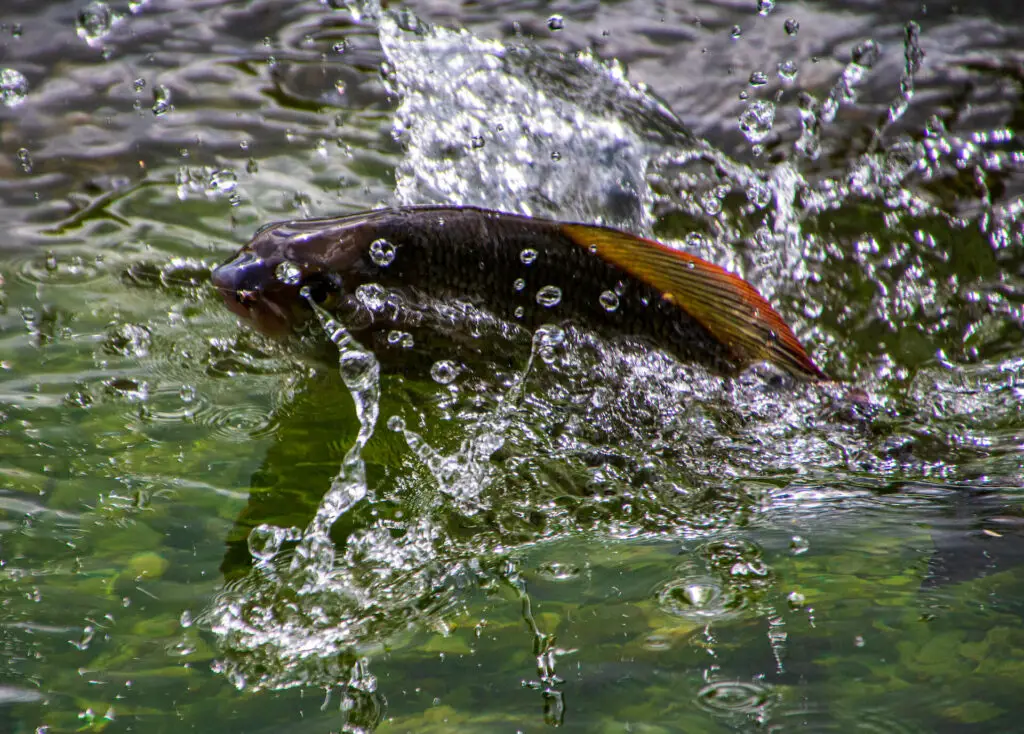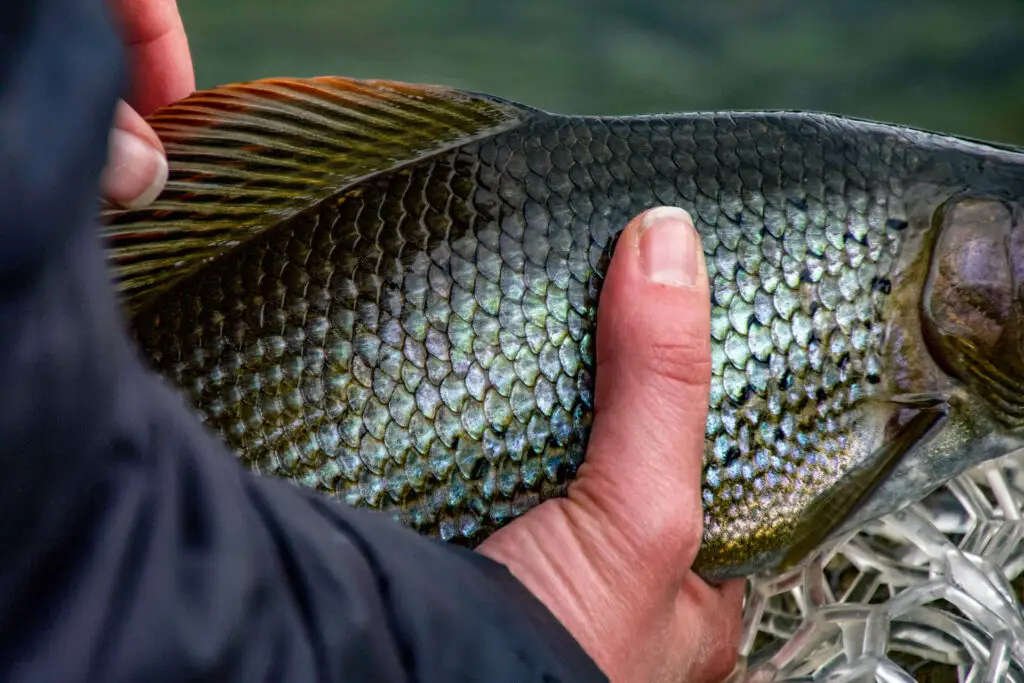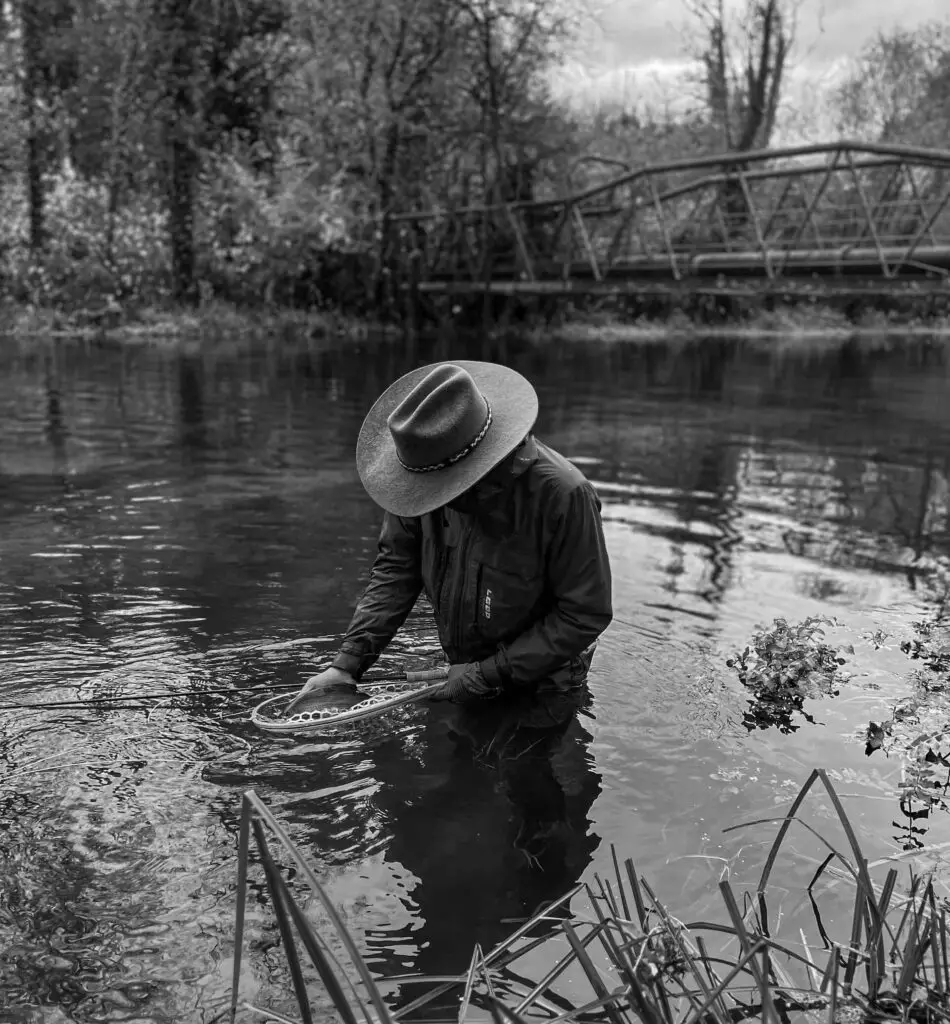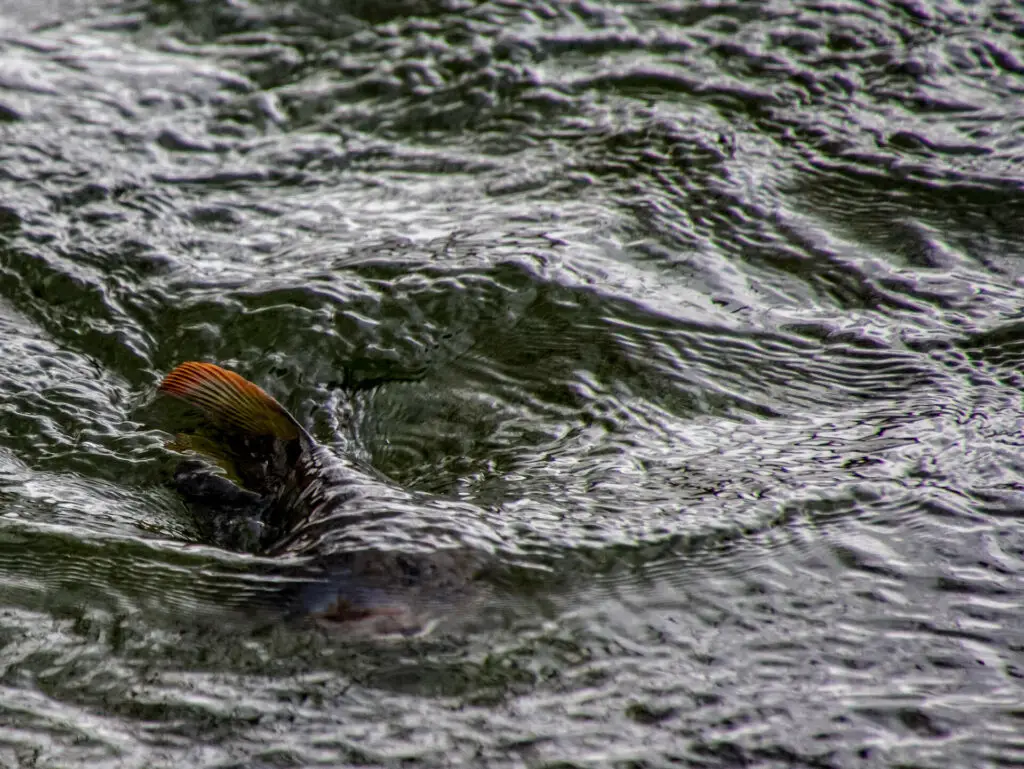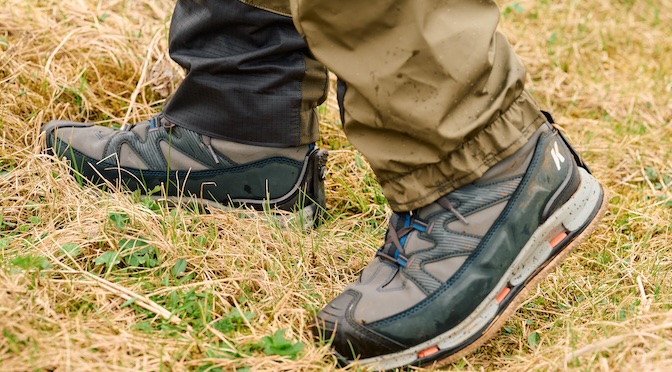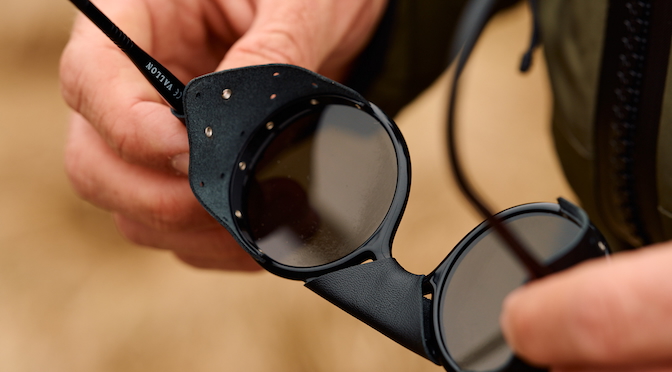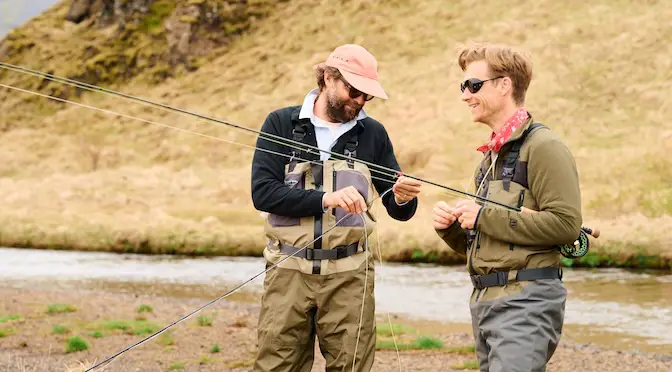It is a special instant when a fish captures your imagination.
We were standing at The Stream at Delphi, the renowned old fishery in Connemara, Ireland when I saw a grayling for the first time. It was on Mick’s phone.
“Wait,” I said. I told him to stop scrolling. “What is that?”
There are no grayling in Ireland, nor where I am from in North America.
The grayling in the photo was one of several he’d fished on a recent trip to Kamchatka.
It looked like it belonged in blue water, but it also looked like a trout.
It had a mohawk.
I was confused, and curious. What was this fish?
Lady of the Stream
Grayling, I’ve decided, is a fish about perception. Where you are, when you are there, and where you are from affect how you perceive the grayling. In the British chalk streams of Hampshire, they’re nicknamed “Lady of the Stream,” but I see a mohawk, a verified boy, grays and blues and only iridescent hints of purples bleeding to pinks. My “Rock Star of the Stream” once culled by British anglers to protect trout habitat, grayling are now protected themselves.
Timing affects one’s perception of grayling. I only had to see a mature subaqueous one on River Itchen in the dead of winter to know that he was there, and it was not my imagination to learn that the trout stream was not just the trout stream. The best time of year for grayling fly fishing is from September to December when they are at their most active and feeding hard throughout the day, but this was March.
It was a year after I’d first learned of grayling that I was stuck by virtue of bad timing wintering in England. I’d spent the last year since leaving the fly fishing guide program at Colorado Mountain College, and my first full season with Delphi entrenched in a massive marketing project housebound helping my parents, with limited support, while it seemed everyone else was fishing. I developed the first episode in a year-long case of cabin fever.
I’d fished just once in 16 months, in April when Mick and I went bonefishing in Turks & Caicos, but it had rained almost the entire trip. We wade-fished two days before the downpour set in. It cleared in time for him to book a guide at the end of the week. After all that anticipation, I got my second—this time tropical—episode cabin fever while he got our lone bonefish. On my rod. It was fair enough with his expense, but the otherwise cool guide had overlooked I even fish, or maybe Mick just paid him for one rod. I never really thought about it, nor asked if I should.
I was beginning to feel like a little lady. Months later landlocked in work, the feeling would be worse, like that of a poser, running low on the inspiration I’d squirreled away from our second day of wading when we kayaked across the creek from where Mick and a friend we’d picked up, Mac, and I spread across three points both near and far enough apart. The last day, after the rains we waded again, but the fever had set.
I was also quickly learning first hand what I’d heard about American vs. European work styles to be true. I was still a contractor through the end of the summer, with no statutory leave, bank holidays, no fishing. The work permit was finally processed only as my mom faced a health diagnosis that meant I needed to work a little longer from home. Two months passed before I returned to Ireland. Now the season was over, I was in England for Christmas, and I was cold.
Still, a month before, I’d attended the Pescare show in Italy, an employee now with all the perks of trade show travel, and I’d met Czechoslovakian Karel Křivanec, the author of Fishing in Grayling Paradise. I spotted the “Rock Star of the Stream” on the cover. Křivanec gave me a signed copy of the story collection about fishing a 15 mile stretch of the Vltava river from 2001-2010. I carried it back to Ireland, then the UK for Christmas, where it sat like a reminder as I sank into a new episode of cabin fever, the seasonal kind of depression until I broke out my phone and started looking for options. That’s when I met Rollo Grandy.
Having been fly fishing for his whole life, Grandy’s passion for brown trout and salmon led to river management projects all over the south of England and keepering beats of the River Itchen. Following years of guiding abroad, Grandy continually acquired knowledge to help build habitats for these species, which in turn made him decide to set up his own sporting adventures, Hookafly.
Grandy collected me one morning from the train station in his Hookafly Land Rover before expelling the wisdom to avoid the overfished Test, and offering to buy me a sandwich. We fueled up and dispatched to an estate where he, not long ago, had undertaken waterkeeper duties. He was keen to talk about his visibly moderate combing of the riverside brush, and did not shy away from the noise pollution of the neighboring highway. It was quieter in the summer, he said, when growth made a buffer.
We talked and walked, covering a mile or so of the river. He was affable and I found myself detailing part one of a three-part story pitching formula I’d worked out as an intern at an American lifestyle magazine. I was attracted to any number of things, I explained, and the first part of the process was allowing myself the mental space to explore why.
Grayling are less tolerant of pollution than trout or salmon, so seeing them is a sign of very healthy, often gin clear water. They were introduced into many of the British southern chalk streams around 1815 with fish from the Hampshire Avon, although the records are sketchy, and spread through the catchments.
But as fly fishing for brown trout gained popularity, grayling were perceived to compete for food and for space, and eat the eggs of spawning trout. Riverkeepers were tasked with netting out as many grayling as they could from their beats. Fisheries organized days where locals were invited to catch and remove the grayling.
“They became vilified by anglers who would throw them into the bushes if caught. A famous overheard conversation between two anglers in a pub on the River Test hears one to say to the other that he ‘dreams of the day when the last pike in the Test dies choking on the last grayling,’” says Kristian Kent of the Grayling Society.
The Grayling Society formed in 1977 as a result of attitudes towards grayling starting to soften, as a generation of more enlightened riparian owners and river keepers recognised that grayling didn’t compete with brown trout and that the two species could live side by side. In 1977, a small group of enthusiastic British game anglers who wanted to conserve grayling and establish it as the third game fish (alongside trout and salmon) formed the Grayling Society.
Ever since, the society has set about promoting angling for grayling alongside its conservation such that the grayling is now a very popular target species for both fly and bait anglers.
“Its popularity lies in its wild beauty, the challenge of catching the grayling which presents different challenges to trout, and the fact that its spawning habits mean that it can be fished for during the winter months when trout are in their closed season. Such is its popularity that anglers will now travel abroad in search of different sub-species and grayling of mythical size,” says Kent.
In clear water, you can spot the difference between a grayling and a trout. They are said to shoal while trout are usually on their own, and they are deeper in the water column. Their mouths are underslung for bottom feeding. Targeting deeper pool tails in slower water will state your intentions to trout in shallow pool heads and fast water. I don’t know if a grayling in March is objectively more exotic than a bonefish in Turks & Caicos in April, but it has its own mystery.
A grayling might still be a trash fish to you, but to me, it is exotic. Winter might be a time to rest your rod in northern latitudes, but to me, now it is a time to pick it up. (If I am stuck.) Your “Lady” is my “Rockstar” of the Stream. Rollo Grandy and I only landed one grayling that day, much smaller than the one I saw under the water, but both fish were important bits in curing cabin fever. We do have to take our medicine, open our own doors.
Learn more about Heather Richie and Hookafly.

